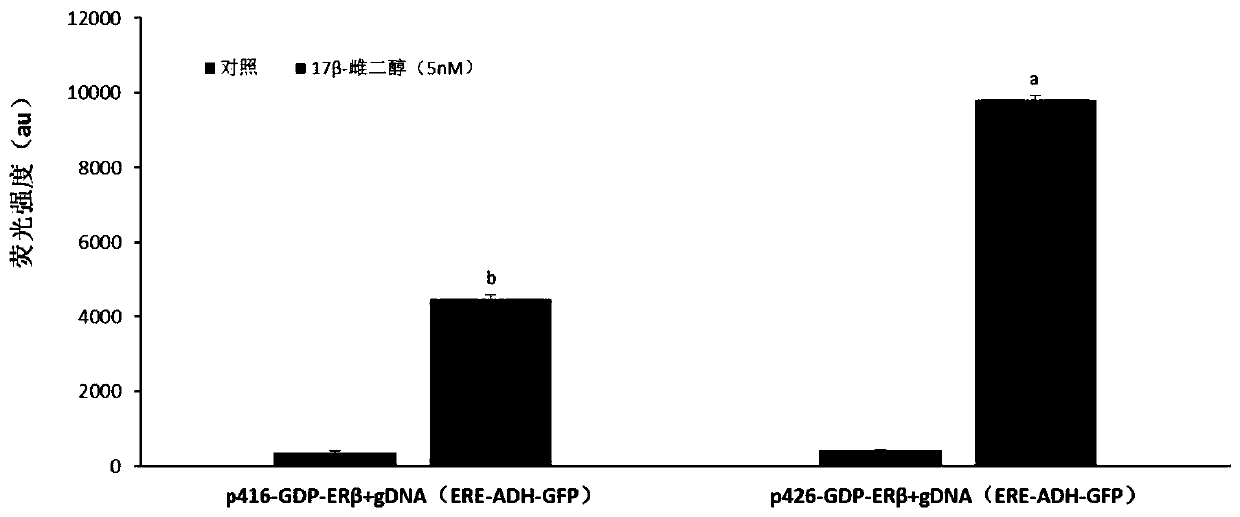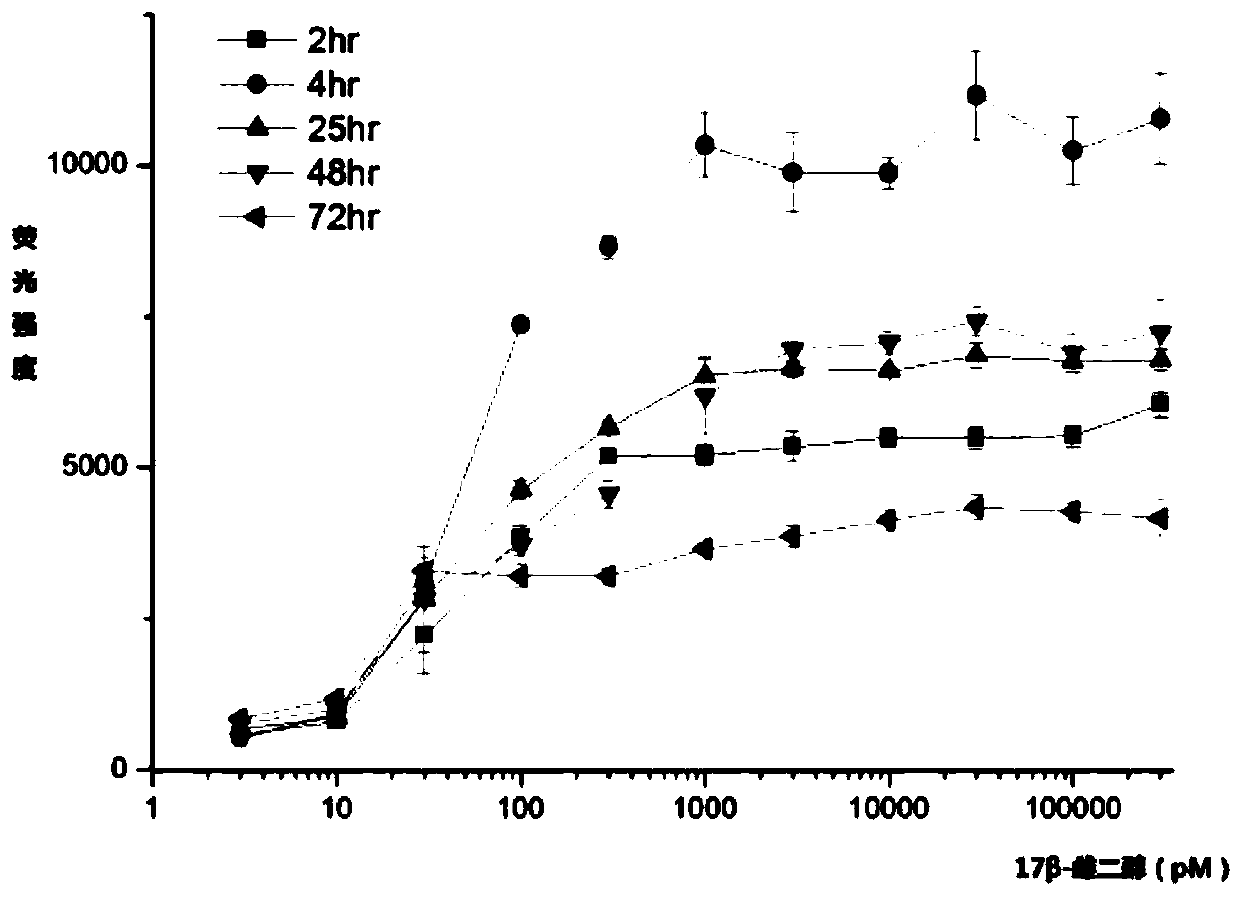Recombinant yeast for detecting estrogenic compounds and its construction method
A technology of estrogen receptor and yeast, applied in the biological field, can solve the problem of low sensitivity of estrogen compounds
- Summary
- Abstract
- Description
- Claims
- Application Information
AI Technical Summary
Problems solved by technology
Method used
Image
Examples
Embodiment 1
[0063] Embodiment 1, construction is used to detect the recombinant yeast of estrogen compound
[0064] The biological effects of estrogen are roughly regulated by three estrogen receptors, namely estrogen receptor alpha (ERα), estrogen receptor beta (ERβ), and G protein-coupled estrogen receptor (GPER). Most of the classic estrogen receptors ERα and ERβ exist in the nucleus and act as ligand-activated transcription factors in the cell. The way these two receptors function is mainly through the classical regulatory pathway, that is, estrogen binds to the estrogen receptor (ER) to form a dimer in the nucleus, and then binds to the estrogen response elements (EREs) located on the promoter of the target gene, thus play a role. Among them, the estrogen receptor ERβ is more sensitive to most estrogen compounds than ERα, so ERβ is selected as the estrogen receptor in the estrogen detection system.
[0065] In order to enhance the sensitivity of the classical regulatory pathway of ...
Embodiment 2
[0098] Example 2, the application of recombinant yeast in the detection of estrogenic compounds
[0099] 1. The detection effect of different strains on estrogen compounds
[0100] Cultivate the recombinant yeast p416GDP-ERβ+gDNA (ERE-ADH-GFP) and p426GDP-ERβ+gDNA (ERE-ADH-GFP) obtained in Example 1, add estrogen compounds (17-β estradiol ) to a final concentration of 5 nM. After shaking for 4 hours, the fluorescence intensity was measured with a microplate reader (infiniteM200PRO) (excitation wavelength 485 nm, emission wavelength 525 nm). Each sample was repeated 3 times. Take no estrogen compound (17‐βestradiol) as the control.
[0101] The result is as figure 1 As shown, it can be seen from the figure that compared with recombinant yeast p416GDP-ERβ+gDNA (ERE-ADH-GFP), the fluorescence intensity of recombinant bacteria p426GDP-ERβ+gDNA (ERE-ADH-GFP) is higher, indicating that this bacteria is used as a detection method. Estrogenic compounds work better.
[0102] 2. T...
PUM
 Login to View More
Login to View More Abstract
Description
Claims
Application Information
 Login to View More
Login to View More - R&D
- Intellectual Property
- Life Sciences
- Materials
- Tech Scout
- Unparalleled Data Quality
- Higher Quality Content
- 60% Fewer Hallucinations
Browse by: Latest US Patents, China's latest patents, Technical Efficacy Thesaurus, Application Domain, Technology Topic, Popular Technical Reports.
© 2025 PatSnap. All rights reserved.Legal|Privacy policy|Modern Slavery Act Transparency Statement|Sitemap|About US| Contact US: help@patsnap.com



